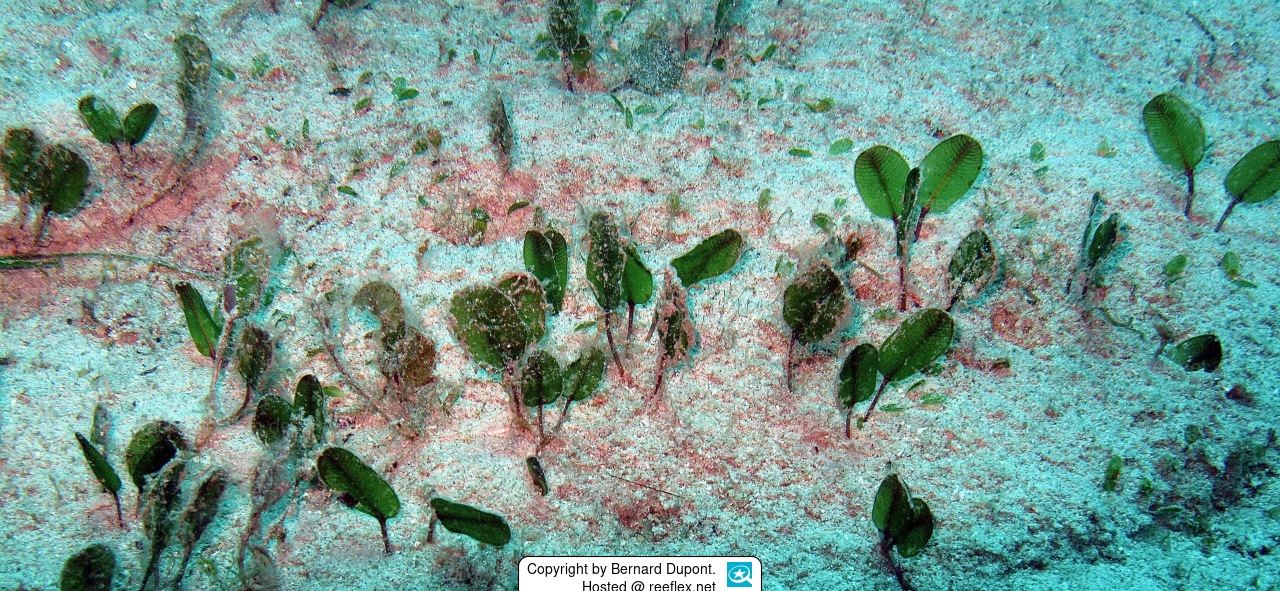Info
Halophila ovalis is a seagrass in the family Hydrocharitaceae, a common name is paddle weed. It is a small herbaceous plant that occurs in sea beds and other saltwater environments.
Synonymised names
Caulinia ovalis R.Brown, 1810 · unaccepted (synonym)
Halophila madagascarensis Doty & B.C.Stone, 1967 · unaccepted (synonym)
Halophila ovalis var. ovata (Gaudichaud) Ascherson, 1868 · unaccepted (synonym)
Halophila ovata Gaudichaud, 1827 · unaccepted
Direct children (1)
Subspecies Halophila ovalis subsp. australis (Doty & B.C.Stone) Hartog, 1970 accepted as Halophila australis Doty & B.C.Stone, 1966 (synonym)







 Bernard Dupont, Frankreich
Bernard Dupont, Frankreich







